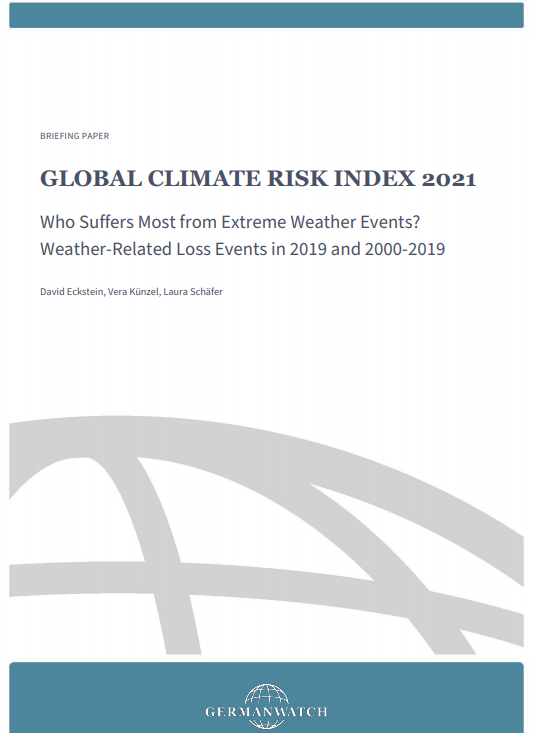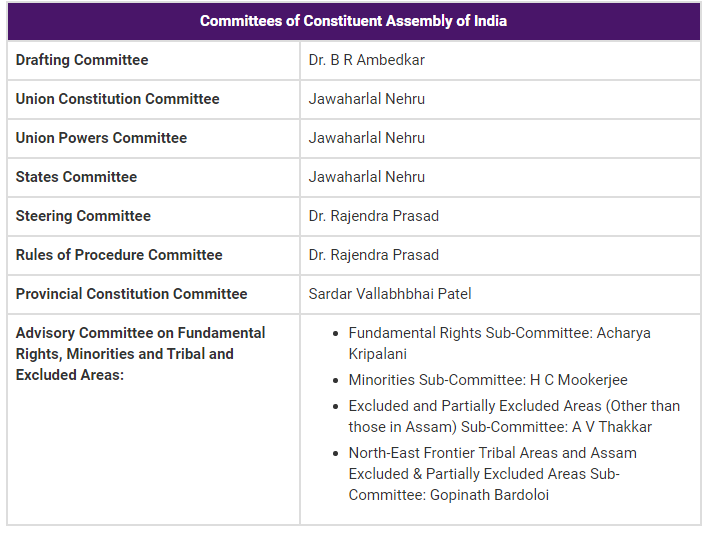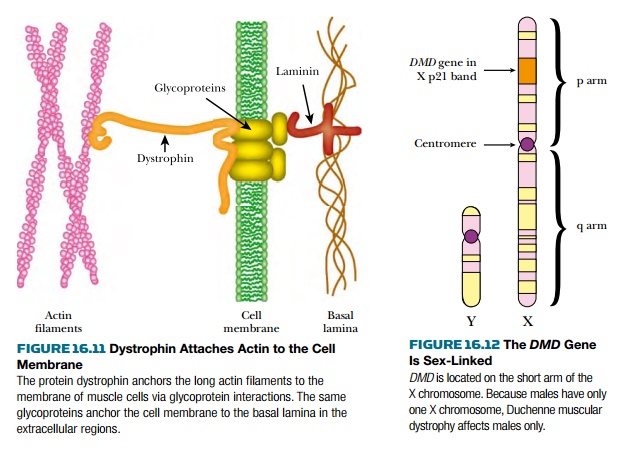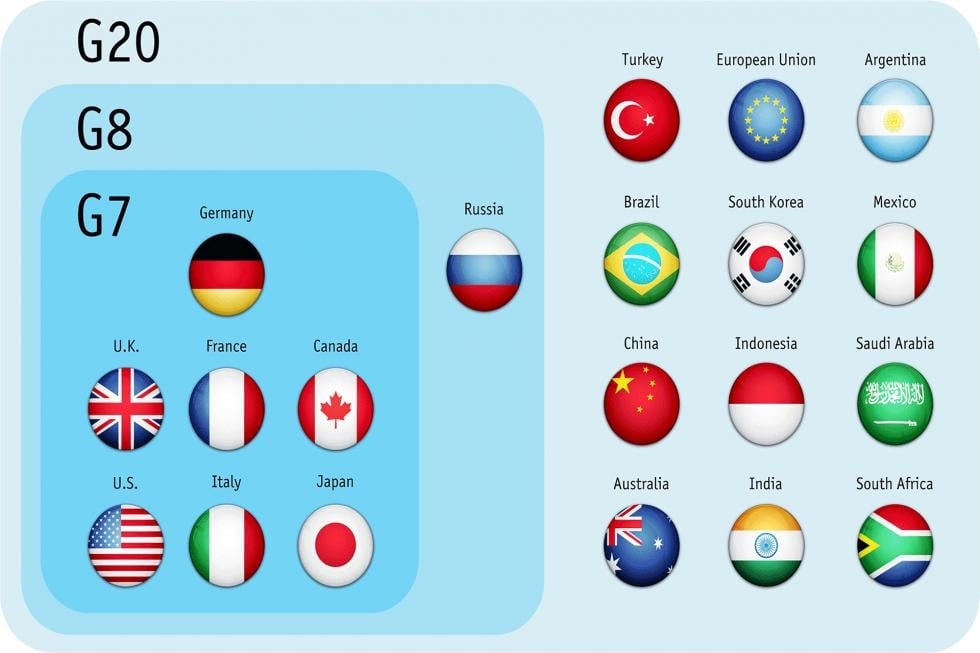The Jan 26th Current Affairs QUIZ 2021
Quiz-summary
0 of 10 questions completed
Questions:
- 1
- 2
- 3
- 4
- 5
- 6
- 7
- 8
- 9
- 10
Information
The Jan 26th Current Affairs QUIZ 2021
You have already completed the quiz before. Hence you can not start it again.
Quiz is loading...
You must sign in or sign up to start the quiz.
You have to finish following quiz, to start this quiz:
Results
0 of 10 questions answered correctly
Your time:
Time has elapsed
You have reached 0 of 0 points, (0)
Categories
- Not categorized 0%
- 1
- 2
- 3
- 4
- 5
- 6
- 7
- 8
- 9
- 10
- Answered
- Review
- Question 1 of 10
1. Question
Recently seen in news “AMPHEX-21” Exercise is between among which of the folllowing?
CorrectAns;- d) None of the above
Explanation;-
• The exercise is not between the other country, the exercise between Indian Navy, Army and Air Force and the coast guards.
About AMPHEX-21
• The Indian Armed forces conducted a large-scale tri-service joint amphibious exercise AMPHEX – 21 in Andaman and Nicobar group of islands in between 21 to 25 January 2021.
• Recently, Indian Armed Forces conducted a large-scale conjoint military training exercise “KAVACH” along with “AMPHEX-21” in the Andaman Sea and Bay of Bengal.
• Along with Kavach Exercise, the Joint Intelligence Surveillance Reconnaissance (ISR) Exercise was also held.
• The ISR involves various technical, electronic and human intelligence from three services.
• The ISR exercise will validate the capabilities of intelligence gathering from space, air, land and sea-based assets/ sensors.
• It is also a tri service Military exercise.
• The exercise was conducted along with the AMHEX-21 in January 2021.
• The exercise was conducted under the aegis of the Andaman and Nicobar Command (ANC) which happens to be the only Joint Forces Command of India.
• The exercise was participated by the Indian Army, Indian Navy, Indian Air force and the Indian Coast Guard. It involves the synergized application of maritime surveillance assets, air and maritime strikes besides the air defence, submarine and landing operations.
• This exercise was conducted with the aim of set up the joint war-fighting capabilities and the Standard Operating Procedures (SOPs) so as to boost the operational synergy between all the services.Significance of such exercises
• Such exercises help in keeping the check on the preparedness of all the agencies to deal with any threat and enhance the coastal security.
• These exercises become more significant in the light of 1993 Bombay Bombings and the 2008 Mumbai Attacks that took place because of unsecure maritime border.IncorrectAns;- d) None of the above
Explanation;-
• The exercise is not between the other country, the exercise between Indian Navy, Army and Air Force and the coast guards.
About AMPHEX-21
• The Indian Armed forces conducted a large-scale tri-service joint amphibious exercise AMPHEX – 21 in Andaman and Nicobar group of islands in between 21 to 25 January 2021.
• Recently, Indian Armed Forces conducted a large-scale conjoint military training exercise “KAVACH” along with “AMPHEX-21” in the Andaman Sea and Bay of Bengal.
• Along with Kavach Exercise, the Joint Intelligence Surveillance Reconnaissance (ISR) Exercise was also held.
• The ISR involves various technical, electronic and human intelligence from three services.
• The ISR exercise will validate the capabilities of intelligence gathering from space, air, land and sea-based assets/ sensors.
• It is also a tri service Military exercise.
• The exercise was conducted along with the AMHEX-21 in January 2021.
• The exercise was conducted under the aegis of the Andaman and Nicobar Command (ANC) which happens to be the only Joint Forces Command of India.
• The exercise was participated by the Indian Army, Indian Navy, Indian Air force and the Indian Coast Guard. It involves the synergized application of maritime surveillance assets, air and maritime strikes besides the air defence, submarine and landing operations.
• This exercise was conducted with the aim of set up the joint war-fighting capabilities and the Standard Operating Procedures (SOPs) so as to boost the operational synergy between all the services.Significance of such exercises
• Such exercises help in keeping the check on the preparedness of all the agencies to deal with any threat and enhance the coastal security.
• These exercises become more significant in the light of 1993 Bombay Bombings and the 2008 Mumbai Attacks that took place because of unsecure maritime border. - Question 2 of 10
2. Question
Which of the following reports are released by the World Economic Forum?
1. Global Gender Gap Report
2. Global Risks Report
3. Global Social Mobility Report
4. Gender Social Norms Index
5. Global Competitiveness ReportCorrectAns;- c) Only 1,2,3 and 5
Explanation;-
• The 4th report by UNDP not by WEF.
• Recent Davos ski resort masks buzz as World Economic Forum talkfest goes virtualAbout World Economic Forum
• The World Economic Forum, based in Cologny, Geneva Canton, Switzerland, is an international NGO, founded on 24 January 1971.
• The WEF’s mission is stated as “committed to improving the state of the world by engaging business, political, academic, and other leaders of society to shape global, regional, and industry agendas”.
• The WEF hosts an annual meeting at the end of January in Davos, a mountain resort in Graubünden, in the eastern Alps region of Switzerland.
• The meeting brings together some 3,000 business leaders, international political leaders, economists, celebrities and journalists for up to five days to discuss global issues, across 500 sessions.
• The World Economic Forum and its annual meeting in Davos are criticized regarding the public cost of security, the formation of a wealthy global elite without attachment to the broader societies, undemocratic decision processes, gender issues and a lack of financial transparency.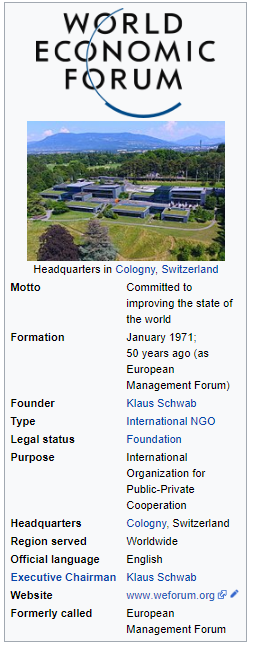 Incorrect
IncorrectAns;- c) Only 1,2,3 and 5
Explanation;-
• The 4th report by UNDP not by WEF.
• Recent Davos ski resort masks buzz as World Economic Forum talkfest goes virtualAbout World Economic Forum
• The World Economic Forum, based in Cologny, Geneva Canton, Switzerland, is an international NGO, founded on 24 January 1971.
• The WEF’s mission is stated as “committed to improving the state of the world by engaging business, political, academic, and other leaders of society to shape global, regional, and industry agendas”.
• The WEF hosts an annual meeting at the end of January in Davos, a mountain resort in Graubünden, in the eastern Alps region of Switzerland.
• The meeting brings together some 3,000 business leaders, international political leaders, economists, celebrities and journalists for up to five days to discuss global issues, across 500 sessions.
• The World Economic Forum and its annual meeting in Davos are criticized regarding the public cost of security, the formation of a wealthy global elite without attachment to the broader societies, undemocratic decision processes, gender issues and a lack of financial transparency.
- Question 3 of 10
3. Question
Which of the following newspaper were released / worked by Subash Chandra Bose Ji?
1. Swaraj
2. Forward
3. Young IndiaCorrectAns;- a) Only 1 and 2
Explanation;-
• The 3rd paper was associated with Gandhiji which Bose Ji was not associated with.
About Subash Chandra Bose Ji
• Netaji Subhas Chandra Bose (23 January 1897 – 18 August 1945) is one of the most celebrated freedom fighters of India.
• In 1942, he earned the title ‘Netaji’, in Germany by the Indian soldiers of the Azad Hind Fauj.
• Bose is credited with the very famous slogan, “Give me blood, and I shall give you freedom!” as well as “Jai Hind”.
• He is also credited to be the first man to call Mahatma Gandhi “Father of the Nation”, in his address from Singapore.
• In 1919, Bose headed to London to give the Indian Civil Services (ICS) examination and he was selected.
• Bose, however, resigned from Civil Services as he believed he could not side with the British.
• In 1921, Bose worked under Chittaranjan Das, a powerful politician in Bengal.
• He worked as the editor for Das’s newspaper, Forward, and later started his own newspaper, Swaraj.Please Click on this link for detailed explanation about Subash Chnadra Bose Ji
IncorrectAns;- a) Only 1 and 2
Explanation;-
• The 3rd paper was associated with Gandhiji which Bose Ji was not associated with.
About Subash Chandra Bose Ji
• Netaji Subhas Chandra Bose (23 January 1897 – 18 August 1945) is one of the most celebrated freedom fighters of India.
• In 1942, he earned the title ‘Netaji’, in Germany by the Indian soldiers of the Azad Hind Fauj.
• Bose is credited with the very famous slogan, “Give me blood, and I shall give you freedom!” as well as “Jai Hind”.
• He is also credited to be the first man to call Mahatma Gandhi “Father of the Nation”, in his address from Singapore.
• In 1919, Bose headed to London to give the Indian Civil Services (ICS) examination and he was selected.
• Bose, however, resigned from Civil Services as he believed he could not side with the British.
• In 1921, Bose worked under Chittaranjan Das, a powerful politician in Bengal.
• He worked as the editor for Das’s newspaper, Forward, and later started his own newspaper, Swaraj.Please Click on this link for detailed explanation about Subash Chnadra Bose Ji
- Question 4 of 10
4. Question
Recently released Global Climate Risk Index, 2021 by which of the following Organizations?
CorrectAns;- b) German Watch
Explanation;-
• Recently in news India ranks seventh among countries most affected in 2019 by climate change, according to the Global Climate Risk Index, 2021, released Monday by Germanwatch an NGO based in Bonn, Germany.
• The index also ranked India as the country that suffered the second-highest monetary loss due to climate change in 2019 after Japan. The index was released ahead of the climate adaption summit that began virtually January 25 and is hosted by the Netherlands.
• In 2019, monsoon continued for a month longer than normal in India. From June to the end of September 2019, 110% of the long-period average was recorded. Flooding caused by heavy rain was responsible for 1,800 deaths across 14 states and led to the displacement of 1.8 million people, the report said. There were eight tropical cyclones in India. Six of them intensified to become “very severe.”
• ‘Extremely severe’ cyclone Fani affected 28 million people, killing 90 people in India and Bangladesh, and causing economic loss to the tune of US$8.1 billion, the report added.
• Mozambique, Zimbabwe, Malawi, South Sudan and Niger were the five African countries among the ten most-affected due to extreme weather in 2019 according to the index. Incorrect
IncorrectAns;- b) German Watch
Explanation;-
• Recently in news India ranks seventh among countries most affected in 2019 by climate change, according to the Global Climate Risk Index, 2021, released Monday by Germanwatch an NGO based in Bonn, Germany.
• The index also ranked India as the country that suffered the second-highest monetary loss due to climate change in 2019 after Japan. The index was released ahead of the climate adaption summit that began virtually January 25 and is hosted by the Netherlands.
• In 2019, monsoon continued for a month longer than normal in India. From June to the end of September 2019, 110% of the long-period average was recorded. Flooding caused by heavy rain was responsible for 1,800 deaths across 14 states and led to the displacement of 1.8 million people, the report said. There were eight tropical cyclones in India. Six of them intensified to become “very severe.”
• ‘Extremely severe’ cyclone Fani affected 28 million people, killing 90 people in India and Bangladesh, and causing economic loss to the tune of US$8.1 billion, the report added.
• Mozambique, Zimbabwe, Malawi, South Sudan and Niger were the five African countries among the ten most-affected due to extreme weather in 2019 according to the index.
- Question 5 of 10
5. Question
Which of the folllowing are correctly matched Committees of Constituent Assembly of India?
1. Union Constitution Committee = Dr. Rajendra Prasad
2. Drafting Committee = Sardar Vallabhbhai Patel
3. Rules of Procedure Committee = Dr. Rajendra PrasadCorrectAns;- b) Only 3
Explanation;-
• India celebrates its 72nd Republic Day today with a shortened programme at Rajpath in Delhi amid the coronavirus pandemic.
• Republic Day is a national holiday in India.
• It honours the date on which the Constitution of India came into effect on 26 January 1950 replacing the Government of India Act (1935) as the governing document of India and thus, turning the nation into a newly formed republic. Incorrect
IncorrectAns;- b) Only 3
Explanation;-
• India celebrates its 72nd Republic Day today with a shortened programme at Rajpath in Delhi amid the coronavirus pandemic.
• Republic Day is a national holiday in India.
• It honours the date on which the Constitution of India came into effect on 26 January 1950 replacing the Government of India Act (1935) as the governing document of India and thus, turning the nation into a newly formed republic.
- Question 6 of 10
6. Question
Which of the following statements about Sudden Stratospheric Warming are incorrect?
a) The stratospheric sudden warming happens every year
b) Every year in summer, strong westerly winds circle around the pole high up in the stratosphere. This is called the stratospheric polar vortex and it circulates around cold air high over the Arctic.CorrectAns;- c) Both 1 and 2
Explanation;-
• As question asked to choose incorrect both the statements are incorrect, that’s y answer is C.
• The 1st state3menbt is incorrect because it doesn’t happen every year.
• 2nd statement is incorrect because it is in winter not summer.What is a Sudden Stratospheric Warming?
• The term sudden stratospheric warming refers to what is observed in the stratosphere:- a rapid warming (up to about 50 °C in just a couple of days), between 10 km and 50 km above the earth’s surface.
• This is so high up that we don’t feel the ‘warming’ ourselves. However, usually a few weeks later, we can start to see knock-on effects on the jet stream, which in turn affects our weather lower down (in the troposphere).
• The stratospheric sudden warming doesn’t happen every year, and it doesn’t always affect our weather when it does.
How does a sudden stratospheric warming occur ?
• Every year in winter, strong westerly winds circle around the pole high up in the stratosphere. This is called the stratospheric polar vortex and it circulates around cold air high over the Arctic.
• In some years, the winds in the polar vortex temporarily weaken, or even reverse to flow from east to west.
• The cold air then descends very rapidly in the polar vortex and this causes the temperature in the stratosphere to rise very rapidly, as much as 50°C over only a few days; hence the term sudden stratospheric warming.
• As the cold air from high up in the stratosphere disperses, it can affect the shape of the jet stream as the cold air sinks from the stratosphere into the troposphere. It is this change in the jet stream that causes our weather to change.
How Sudden Stratospheric Warming (SSW) Affects the Whole Atmosphere ?
• High above Earth’s surface, air temperatures occasionally increase suddenly, producing widespread effects on weather, air chemistry, and telecommunications.
• Recent research has conclusively shown the existence of a strong connection between SSWs and extensive changes throughout Earth’s atmosphere.
• These changes can affect atmospheric chemistry, temperatures, winds, neutral (non-ionized particle) and electron densities, and electric fields.
• They extend from the surface to the thermosphere and across both hemispheres.
• The implications extend not only to weather forecasting here on the surface but also to greater understanding of chemical processes in the atmosphere.
• For example adverse effects on satellite navigation systems (e.g., GPS) and telecommunications, and possibly even the study of atmospheres on other planets.
SoucreIncorrectAns;- c) Both 1 and 2
Explanation;-
• As question asked to choose incorrect both the statements are incorrect, that’s y answer is C.
• The 1st state3menbt is incorrect because it doesn’t happen every year.
• 2nd statement is incorrect because it is in winter not summer.What is a Sudden Stratospheric Warming?
• The term sudden stratospheric warming refers to what is observed in the stratosphere:- a rapid warming (up to about 50 °C in just a couple of days), between 10 km and 50 km above the earth’s surface.
• This is so high up that we don’t feel the ‘warming’ ourselves. However, usually a few weeks later, we can start to see knock-on effects on the jet stream, which in turn affects our weather lower down (in the troposphere).
• The stratospheric sudden warming doesn’t happen every year, and it doesn’t always affect our weather when it does.
How does a sudden stratospheric warming occur ?
• Every year in winter, strong westerly winds circle around the pole high up in the stratosphere. This is called the stratospheric polar vortex and it circulates around cold air high over the Arctic.
• In some years, the winds in the polar vortex temporarily weaken, or even reverse to flow from east to west.
• The cold air then descends very rapidly in the polar vortex and this causes the temperature in the stratosphere to rise very rapidly, as much as 50°C over only a few days; hence the term sudden stratospheric warming.
• As the cold air from high up in the stratosphere disperses, it can affect the shape of the jet stream as the cold air sinks from the stratosphere into the troposphere. It is this change in the jet stream that causes our weather to change.
How Sudden Stratospheric Warming (SSW) Affects the Whole Atmosphere ?
• High above Earth’s surface, air temperatures occasionally increase suddenly, producing widespread effects on weather, air chemistry, and telecommunications.
• Recent research has conclusively shown the existence of a strong connection between SSWs and extensive changes throughout Earth’s atmosphere.
• These changes can affect atmospheric chemistry, temperatures, winds, neutral (non-ionized particle) and electron densities, and electric fields.
• They extend from the surface to the thermosphere and across both hemispheres.
• The implications extend not only to weather forecasting here on the surface but also to greater understanding of chemical processes in the atmosphere.
• For example adverse effects on satellite navigation systems (e.g., GPS) and telecommunications, and possibly even the study of atmospheres on other planets.
Soucre - Question 7 of 10
7. Question
Dystrophin, recently seen in the news, is related which of the folloiwng ?
CorrectAns;- d) A Protein
Explanation;-
• Dystrophin is a rod-shaped cytoplasmic protein, and a vital part of a protein complex that connects the cytoskeleton of a muscle fiber to the surrounding extracellular matrix through the cell membrane.
• This complex is variously known as the costamere or the dystrophin-associated protein complex. Incorrect
IncorrectAns;- d) A Protein
Explanation;-
• Dystrophin is a rod-shaped cytoplasmic protein, and a vital part of a protein complex that connects the cytoskeleton of a muscle fiber to the surrounding extracellular matrix through the cell membrane.
• This complex is variously known as the costamere or the dystrophin-associated protein complex.
- Question 8 of 10
8. Question
Which of the following factors taken into consideration for fixing Minimum Support Price (MSP)?
1. Cost of production
2. Inter-crop price parity
3. A minimum of 10% as the margin over cost of production
4. Terms of trade between agriculture and non-agricultureCorrectAns;- c) Only 1,2 and 4
Explanation;-
• The 3rd is wrong because it is 50% not 10%.
About Minimum Support Price (MSP)
• The MSP is the rate at which the government buys grains from farmers.
• The MSP system was started in 1966-67 for wheat and was expanded further to include other essential food crops, which was then sold to the poor under subsidized rates under the public distribution system (PDS).
• Reason behind the idea of MSP is to counter price volatility of agricultural commodities due to the factors like variation in their supply, lack of market integration and information asymmetry.
• Fixation of MSP
• The MSP is fixed on the recommendations of the Commission for Agricultural Costs and Prices (CACP).
• Factors taken into consideration for fixing MSP include:
a) Demand and supply;
b) Cost of production (A2 + FL method)
c) Price trends in the market, both domestic and international;
d) Inter-crop price parity;
e) Terms of trade between agriculture and non-agriculture;
f) A minimum of 50% as the margin over cost of production; and
g) Likely implications of MSP on consumers of that product.
• The Commission also makes visits to states for on-the-spot assessment of the various constraints that farmers face in marketing their produce, or even raising the productivity levels of their crops.
• Based on all these inputs, the Commission then finalizes its recommendations/reports, which are then submitted to the government.
• The government, in turn, circulates the CACP reports to state governments and concerned Central Ministries for their comments.
• After receiving the feed-back from them, the Cabinet Committee on Economic Affairs (CCEA) of the Union government takes a final decision on the level of MSPs and other recommendations made by the CACP.
• The Food Corporation of India (FCI), the nodal central agency of the Government of India, along with other State Agencies undertakes procurement of crops.IncorrectAns;- c) Only 1,2 and 4
Explanation;-
• The 3rd is wrong because it is 50% not 10%.
About Minimum Support Price (MSP)
• The MSP is the rate at which the government buys grains from farmers.
• The MSP system was started in 1966-67 for wheat and was expanded further to include other essential food crops, which was then sold to the poor under subsidized rates under the public distribution system (PDS).
• Reason behind the idea of MSP is to counter price volatility of agricultural commodities due to the factors like variation in their supply, lack of market integration and information asymmetry.
• Fixation of MSP
• The MSP is fixed on the recommendations of the Commission for Agricultural Costs and Prices (CACP).
• Factors taken into consideration for fixing MSP include:
a) Demand and supply;
b) Cost of production (A2 + FL method)
c) Price trends in the market, both domestic and international;
d) Inter-crop price parity;
e) Terms of trade between agriculture and non-agriculture;
f) A minimum of 50% as the margin over cost of production; and
g) Likely implications of MSP on consumers of that product.
• The Commission also makes visits to states for on-the-spot assessment of the various constraints that farmers face in marketing their produce, or even raising the productivity levels of their crops.
• Based on all these inputs, the Commission then finalizes its recommendations/reports, which are then submitted to the government.
• The government, in turn, circulates the CACP reports to state governments and concerned Central Ministries for their comments.
• After receiving the feed-back from them, the Cabinet Committee on Economic Affairs (CCEA) of the Union government takes a final decision on the level of MSPs and other recommendations made by the CACP.
• The Food Corporation of India (FCI), the nodal central agency of the Government of India, along with other State Agencies undertakes procurement of crops. - Question 9 of 10
9. Question
The QAnon, seen in the news recently, is related to which of the following ?
CorrectAns;- a) A far-right conspiracy theory
Explanation;-
• QAnon a far-right conspiracy theory.
• QAnon emerged in 2017 through anonymous, fringe online message boards before migrating to Twitter, Facebook and other mainstream platforms that were slow to purge the conspiracy theory from their sites.IncorrectAns;- a) A far-right conspiracy theory
Explanation;-
• QAnon a far-right conspiracy theory.
• QAnon emerged in 2017 through anonymous, fringe online message boards before migrating to Twitter, Facebook and other mainstream platforms that were slow to purge the conspiracy theory from their sites. - Question 10 of 10
10. Question
Which of the following countries are not part of the G-7 or ‘Group of Seven’?
1. Canada
2. South Korea
3. Australia
4. ChinaCorrectAns;- b) Only 2,3 and 4
Explanation;-
• Except Canada all are not part of G7
About G7
• The Group of Seven (G7) is a forum of the world’s seven largest developed economies whose government leaders meet annually to discuss international economic and monetary issues.
• The G-7 has its roots in an informal meeting of the finance ministers of France, West Germany, the U.S, Great Britain, and Japan (the Group of Five) in the wake of the 1973 oil crisis. That, in turn, inspired the French President to invite the leaders of those countries, and Italy, to Rambouillet in 1975 for further discussions on global oil.
• The next year, Canada was also invited to join the group and the first meeting with all G-7 nations was hosted by the United States which was held in Puerto Rico in 1976.
• Summits are held annually and hosted on a rotation basis by the group’s members.
• The 2018 summit was hosted by Canada in Quebec from June 8-9.
• The 45th G7 summit was hosted by France from August 24-26, 2019, in Biarritz in Nouvelle-Aquitaine, France.About G7 Members
• The G7 members are recognized as the seven wealthiest and most advanced nations in the world. The members are:
• France,
• Germany,
• The United Kingdom,
• Italy,
• The United States of America,
• Canada,
• Japan
• The European Union is sometimes considered an eighth member of the G-7, since it holds all the rights and responsibilities of full members except to chair or host the meeting.
About Expansion to G-8 (the Group of Eight)
• The G-7 responded as the global economy evolved. In 1991, the Soviet Union pledged to create an economy with freer markets and held its first direct presidential election.
• Following the 1994 G7 meeting in Naples, Russian President held meetings with G-7 member countries, in what became known as the P-8 (Political 8).
• In 1998, after urging from leaders including U.S. President, Russia was added to the G-7 group as a full-time member, creating a formal G-8.
• However, in 2014, Russia was suspended from the group after the annexation of Crimea and tensions in Ukraine.About G7 Purpose
• The major purpose of the G-7 is to discuss and deliberate on international economic issues. It sometimes acts in concert to help resolve other global problems, with a special focus on economic issues.
• G7 fills out numerous global top lists:
• Leading export countries,
• Largest gold reserves,
• Largest nuclear energy producers,
• Top contributors to the UN budget.IncorrectAns;- b) Only 2,3 and 4
Explanation;-
• Except Canada all are not part of G7
About G7
• The Group of Seven (G7) is a forum of the world’s seven largest developed economies whose government leaders meet annually to discuss international economic and monetary issues.
• The G-7 has its roots in an informal meeting of the finance ministers of France, West Germany, the U.S, Great Britain, and Japan (the Group of Five) in the wake of the 1973 oil crisis. That, in turn, inspired the French President to invite the leaders of those countries, and Italy, to Rambouillet in 1975 for further discussions on global oil.
• The next year, Canada was also invited to join the group and the first meeting with all G-7 nations was hosted by the United States which was held in Puerto Rico in 1976.
• Summits are held annually and hosted on a rotation basis by the group’s members.
• The 2018 summit was hosted by Canada in Quebec from June 8-9.
• The 45th G7 summit was hosted by France from August 24-26, 2019, in Biarritz in Nouvelle-Aquitaine, France.About G7 Members
• The G7 members are recognized as the seven wealthiest and most advanced nations in the world. The members are:
• France,
• Germany,
• The United Kingdom,
• Italy,
• The United States of America,
• Canada,
• Japan
• The European Union is sometimes considered an eighth member of the G-7, since it holds all the rights and responsibilities of full members except to chair or host the meeting.
About Expansion to G-8 (the Group of Eight)
• The G-7 responded as the global economy evolved. In 1991, the Soviet Union pledged to create an economy with freer markets and held its first direct presidential election.
• Following the 1994 G7 meeting in Naples, Russian President held meetings with G-7 member countries, in what became known as the P-8 (Political 8).
• In 1998, after urging from leaders including U.S. President, Russia was added to the G-7 group as a full-time member, creating a formal G-8.
• However, in 2014, Russia was suspended from the group after the annexation of Crimea and tensions in Ukraine.About G7 Purpose
• The major purpose of the G-7 is to discuss and deliberate on international economic issues. It sometimes acts in concert to help resolve other global problems, with a special focus on economic issues.
• G7 fills out numerous global top lists:
• Leading export countries,
• Largest gold reserves,
• Largest nuclear energy producers,
• Top contributors to the UN budget.

